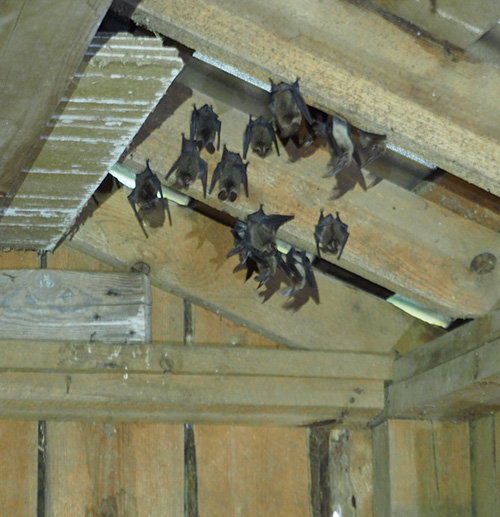Introduction
Many Californians do not often see bats, but bats are active all over the Golden State. Every night bats fly through our fields, neighborhoods, and cities, eating massive numbers of insect pests. They are vital to maintaining a healthy ecosystem and benefit our crops by reducing the amount of pesticides agriculturalists need to apply. They are also a fascinating, diverse group of mammals. Unfortunately, bats face many threats, including White-nose Syndrome, a devastating fungal disease that has been spreading across North America. In coordination with the U.S. Fish and Wildlife Service, the California Department of Fish and Wildlife (CDFW) is closely monitoring bat populations to respond to this threat.
If you are lucky enough to see a group of roosting bats, CDFW would like to know about it! Knowing where bats roost allows us to prioritize surveillance efforts, monitor population trends, and protect California’s bats.
 Photo © Joe Szewczak.
Photo © Joe Szewczak.
Report a Bat Colony
You can help CDFW track bat populations in California by reporting bat colonies or their roost sites. A bat colony is a group of bats roosting during the day or hibernating during winter. Bat roosts may be found in many kinds of structures, including attics, warehouses, outbuildings, barns, siding or roofs of houses and other buildings, bridges, parking garages, woodpiles, trees, bat houses, caves, mines, talus, and rock crevices.
- Do not pick up or touch live or dead bats with your bare hands
- If you are scratched or bitten by a bat, or are in contact with saliva of a dead or live bat, contact your local public health department
- Do not disturb roosting bats by entering their roost site, if possible. Avoiding roost sites also will help prevent the spread of diseases such as White-nose Syndrome
Please fill out the form found below, and someone from CDFW will be in touch to learn more about the colony you have found. Thank you for your help in protecting these beneficial animals!
If you have found a dead bat, please use the “Report a Sick or Dead Bat” form instead of this form.
* indicates a required field